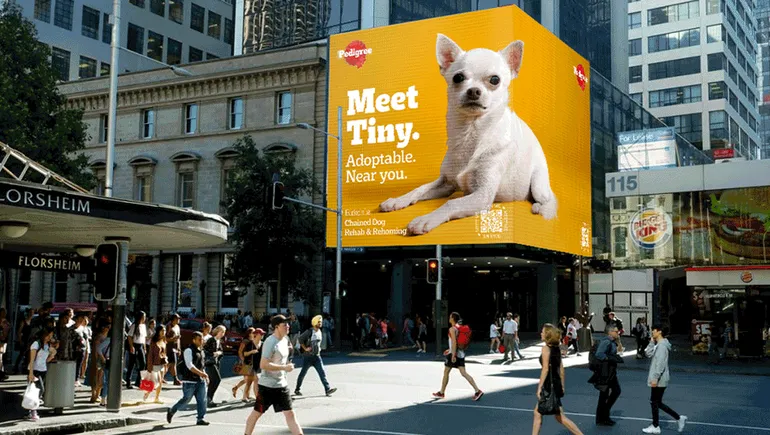
How to withstand ad fraud in the CTV environment
The following is a guest post from Anna Kuzmenko, COO at Fiksu DSP. Opinions are the author’s own.
Lockdowns caused by the current COVID-19 pandemic have dramatically altered everyday life. This change reinforces the position of connected TV (CTV) and over-the-top (OTT) as primary means of entertainment for thousands of people worldwide. With this in mind, the advertising industry can enlarge the number of potential ad viewers. Yet, it’s essential to realize both the positives and negatives of the digital ad marketplace, as it not facilitates profit and challenges companies to deal with scams.
The CTV landscape
CTV and OTT programmatic advertising has gained exponential popularity. In 2019, these forms of content consumption reached new highs following rapid growth. CTV and OTT showed a 330% global rise with at least 50% quarter-over-quarter growth, according to Pixalate. Meanwhile, a 232% global rise has occurred in OTT and CTV programmatic apps over the past 18 months.
Although linear TV still prevails over CTV in numbers, the consumer migration from traditional television to smart television and OTT devices is stable and grows mainly because of the shift in lifestyle preferences. In the U.S., more than 200 million consumers opted for OTT video content in 2019, and approximately two-thirds of them watched it via CTV. Thus, CTV and OTT offer more opportunities to ad buyers and incentivize them to move media budgets away from traditional television.
Despite the popularity of OTT and CTV, several technical and financial factors make them vulnerable to scams. Primarily, the root of the problem is the shortage of measurement protocols to surveil actions on the web, whereas the indices of streaming video consumption grow more rapidly. As the viewership is divided between several platforms and devices, the process of fraud detection gets rather complicated.
OTT and CTV expand the marketplace and engage more advertisers ready to tap into emerging opportunities, and it’s crucial to build a reliable partnership, raise awareness of the problem and take steps to prevent ad fraud.
Growing concerns around ad fraud
The naive perception of CTV as a fraud-free environment contributes to the current fraud situation. Although Integral Ad Science verified hundreds of millions of ads and saw lower levels of fraud in CTV compared to other digital environments, there are a number of scams that still occur.
The problem exists within emerging channels where the norms and measures are yet to be established and demand outstrips supply. According to The Industry Pulse Report, “ahead of 2020, 46% of publishers cited ad fraud as a challenge for programmatic advertising, well above the 38% of respondents industry-wide who said increasing levels of ad fraud would be a concern for automated transactions.”
So, what is the mechanism of ad fraud? In most cases, neither party is aware of the potential scam. Media buyers believe they purchase licensed, top-notch CTV video inventory while publishers are confident they’ve sold the standard ad display inventory. Users, in turn, receive random display ads with ongoing CTV video calls in the background. So far, ad fraud detection appears challenging even in the developing advertising market where the authoritative world publishers and media buyers participate.
Fraud types
In order to understand how to withstand scams in CTV advertising, it’s important to be aware of the forms they take.
- Fraud from bots: Bot networks are considered one of the most popular methods fraudsters employ to squeeze money from unsuspecting advertisers. Fraud on devices and apps are the pervasive examples when bots are used in digital media.
- Fraud on devices: These cases occur when fraudsters install bots on gadgets to crawl apps and websites, imitating human behavior. Bots on devices can even engage with the ads or generate fake clicks. They appear to be easily detected within a short period by spotting a high number of ad requests from the same device.
- Fraud on apps: This type of scam is closely linked to bots and devices. An app’s activity levels are observed within a day to determine whether fraud has occurred. A red flag you shouldn’t ignore is the situation when apps constantly show high rates of activity.
- Domain spoofing: A scheme is employed to conceal the fraudulent traffic of a website and make it look legitimate. It may also include banner farms with adverse content.
- Geographic misrepresentation: Fraud occurs when scammers claim to be selling U.S.-based inventory, although the impressions are generated in a different location. This scheme can be lucrative because U.S. CPMs are higher than in other countries. When disguising the traffic as legitimate, fraudsters are able to net a larger profit margin.
Ensuring brand safety
Advertising agencies can ensure brand safety on CTV, taking into account these four helpful factors:
- Selection of the right ad traffic and placement: It’s essential to get brand-safe content on the streaming service, not screensaver apps. OTT and CTV buyers should purchase directly from trusted publishers. Otherwise, the source of ad requests must be verified.
- Cooperation with certified advertisers: In the U.S., cooperation in the uncertain legislative environment makes it challenging to reach a positive solution to the issue. Only the joint efforts will result in ad-fraud safety. Namely, advertisers should be responsible for desired content while agencies (or DSPs) are liable for targeting and controlling ad placements so monitoring of the ad campaign is carried out using proprietary software or employing anti-fraud systems.
- Performance report: Don’t rely on quick methods to monitor your effectiveness on CTV and employ key metrics to measure campaign effectiveness. Opt for programs that enable you to control the content, traffic and users’ interactions. Analyze data to understand what to fix or alter in the advertising campaign. It will also prevent hazardous issues.
- Anti-fraud systems: You should address third parties specializing in this sphere to help you control performance on CTV. Pixalate is the only anti-fraud vendor accredited by MRC for CTV (OTT) video impression measurement. Although MOAT and Double Verify are developing viewability measurement and brand safety tools, respectively, neither are certified yet. If you choose anti-fraud systems, make sure you’ve checked their credibility.
OTT and CTV are strong platforms for targeting large audiences. Amid ample opportunities, the environment remains vulnerable to certain types of ad fraud. The detected cases uncover the sophisticated techniques fraudsters employ. Hence, cooperation with reliable partners boosts brand safety and enables companies to avoid ad frauds on CTV.





